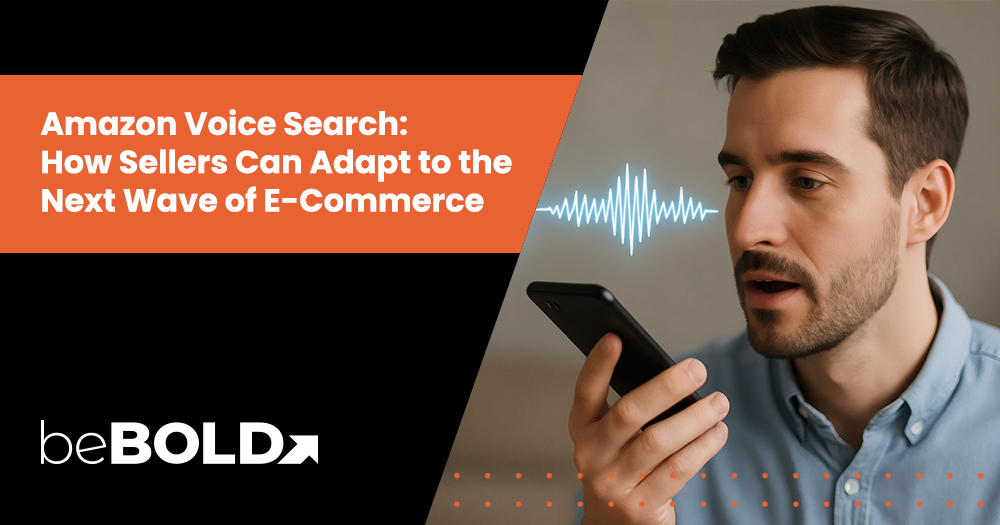Key Summary
- Voice commerce is booming. Amazon Alexa powers millions of purchases monthly, with voice-enabled retail projected to hit $80 billion globally by 2025. 📈
- Amazon Voice Search delivers just one or two results, meaning sellers must fight to be the product Alexa recommends. 🎯
- Hands-free shopping, personalized suggestions, and faster decisions make voice appealing for multitasking consumers. 🗣️
- Early adopters get a first-mover advantage, securing long-term rankings and repeat orders before the market saturates. 🚀
- Conversational, long-tail keywords and search intent optimization are critical for matching spoken queries. 🔑
- Winning “Amazon’s Choice” can dramatically boost voice search visibility. 🏆
- Local intent matters. 75% of voice searches are location-based, creating opportunities for regional targeting. 📍
- Mobile optimization is essential, as most voice queries start on smartphones. 📱
- Positive reviews and ratings heavily influence which products Alexa recommends. ⭐
Future voice commerce will be AI-powered, personalized, and omnichannel, with Alexa+ unlocking interactive brand experiences. 🤖
Voice commerce is no longer an emerging trend. It’s here now, and it’s transforming the way shoppers discover and purchase products. Every month, Amazon’s Alexa alone powers millions of hands-free shopping experiences, with projections suggesting voice-enabled retail will exceed $80 billion globally by 2025. For Amazon sellers, adapting now can gain a significant competitive advantage just before the trend takes off.
This guide covers how Amazon voice search is reshaping e-commerce SEO, the tactics sellers can use to capture voice-driven traffic, and where the technology is headed next.
What is Amazon Voice Search?

Picture this: your customer says, “Alexa, order my favorite lipstick,” and within seconds, your product is in their cart. No need to type, no scrolling, no decision fatigue. That’s the power of the Amazon Voice Search, a feature built into Alexa-powered devices like Echo smart speakers, Fire TV, Fire Tablets, and even the Amazon Shopping app.
When shoppers use voice, they’re often looking for speed, simplicity, and trusted recommendations. Alexa taps into Amazon’s massive product catalog and customers’ purchase history data to find what it believes is the most relevant match. That means your product isn’t competing in a full search results page. It’s competing to be the best answer Alexa chooses and speaks back.
But aside from its speed, Amazon’s voice search also offers key advantages for customers around the world, including:
- Hands-free convenience: Whether you’re cooking, driving, or chasing after kids, Amazon’s voice search is perfect for any multitasking moment when typing just won’t work.
- Personalized recommendations: Every voice search is powered by Alexa’s ability to tap into a user’s order history, browsing habits, or even the latest trends. You get suggestions based on existing user data for the best match.
- Faster decision-making: By removing the need to scan dozens of listings, Alexa streamlines the buying process to a single recommendation.

With this foundation in mind, the next question becomes: why should sellers focus on voice commerce right now, before everyone else does?
Why Adapting to Voice Commerce Now Gives Sellers a Competitive Edge
While voice commerce is steadily gaining traction, it’s still in its scaling stage, which means the competitive landscape is less crowded than traditional text search. If you’re an early adopter, you get a rare first-mover advantage in a platform that will heavily favor repeat buying behavior. Here’s why acting early matters:
- Secure prime voice rankings before the rush: Once Alexa favors your product for a query, it tends to stay there if customers keep buying.
- Integrate into customer routines: Voice shopping often becomes a habit (“Alexa, reorder my dog food”), locking your brand into repeat purchases.
- Influence recommendation algorithms: High stock levels, strong reviews, competitive pricing, and Prime eligibility all improve your odds of becoming Alexa’s default choice.
- Shifting to semantic and colloquial language means better reach: Voice search is shifting the way customers ask queries, with Google noting that more and more people are asking “What/Where/Who/How/When/Why” questions. By shifting to colloquial language use, you can target searches that are more targeted.
In other words, getting ahead now means not only more sales today but also long-term brand loyalty, which brings us to how voice search is already reshaping SEO itself.
How Voice Search is Changing E-Commerce SEO
With Amazon voice search, voice shoppers often get just one or two answers, meaning visibility comes down to whether your product is the one Alexa chooses to recommend. This shift impacts not only what keywords you target, but also how you structure content, collect reviews, and optimize for mobile. Here’s how voice search is forecasted to change e-commerce SEO in Amazon:
1. Shift Toward Long-Tail and Conversational Keywords
Voice queries are typically 3 to 5 words longer than typed searches and use natural speech patterns. Instead of “organic dog food small,” a shopper might say, “Alexa, what’s the best organic dog food for small breeds?” Optimizing Amazon listings with conversational phrasing and question-based keywords helps align with the way customers actually speak to devices.
|
Searching the web |
Amazon Voice Search |
|
“best earbuds Amazon” |
“what are the best earbuds on Amazon” or “which earbuds should I buy on Amazon?” |
2. Greater Emphasis on Search Intent Over Exact Match Keywords
Algorithms like Amazon’s A9 and Google’s AI now focus on the meaning behind the query, not just exact keyword matches. A search for “best running shoes for bad knees” may surface products that address cushioning and joint support, even if those exact words aren’t repeated verbatim. Sellers should focus on answering customer needs in plain, benefit-led language.
3. Increased Priority for Featured Snippets & Position Zero
On Google, voice assistants often read aloud content from the featured snippet, also known as position zero. Amazon’s equivalent is surfacing a single “Amazon’s Choice” product as the default answer. Structuring content in clear, concise bullet points or FAQ formats improves your odds of capturing these coveted top spots.
4. Rise of Local and “Near Me” Searches
Roughly 75% of voice searches have local intent. While Amazon is primarily national, its same-day delivery and local pickup options mean sellers can capture voice shoppers looking for “near me” solutions, particularly in categories like grocery, pet supplies, and home essentials. Accurate location data and region-specific keywords can make the difference here.
5. Mobile-First & Voice-Optimized User Experience
Most voice queries happen on mobile devices. If your Amazon product page loads slowly or displays poorly on mobile, customers are more likely to abandon the purchase. A fast-loading, mobile-friendly listing with scannable bullets and clear imagery ensures a smoother transition from voice query to conversion.
6. Increased Importance of Structured Data (Schema Markup)
While Amazon controls most backend structure, sellers with brand stores or off-Amazon sites can use schema markup for products, reviews, pricing, and FAQs. This helps Alexa and other assistants read, understand, and present your content accurately in voice results.
7. Fewer Organic Result Opportunities
Typed search might return 50+ results, but voice often delivers a single answer. That means competition is winner-takes-all. To take advantage of this, sellers must optimize aggressively to be the recommended product for a given query.
8. Higher Weight on Reviews and Ratings for Product Selection
Multiple voice search studies show that positive ratings and a strong review profile heavily influence which product Alexa recommends. To improve your odds, aim for 4+ star ratings, consistent review generation, and prompt resolution of negative feedback.
The good news? These trends aren’t just challenges – they’re opportunities. By tailoring your strategy now, you can own your niche in voice search before it gets crowded with your competitors.
How Sellers Can Leverage Voice Search for E-Commerce Success

To win in the voice search environment, sellers need to adapt both their Amazon listings and overall digital presence to match how people speak, what Alexa prioritizes, and the factors that influence voice algorithms. Here’s a foolproof plan on how to successfully position your brand:
Optimize Amazon Listings for Voice Search
- Boost sales by optimizing your listings with question-style headers and conversational bullet points that mirror common customer queries like “What’s the best blender for smoothies?”
- Naturally weave long-tail keywords into titles, bullets, and descriptions so Alexa can match your product to voice queries.
- Use backend search terms for phrases customers might say but not type, such as “Alexa, order my favorite shampoo” or “Alexa, find gluten-free pancake mix.
Focus on Local SEO
- Keep your Google Business Profile, Amazon Store location details, and any regional listing information accurate to capture “near me” voice searches.
- Use region-specific keywords for products eligible for same-day delivery or in-store pickup to increase relevance for local shoppers.
Enhance Product Titles and Descriptions
- Optimize your Amazon product titles by leading with the most relevant spoken-style keywords so they’re more likely to be recognized by voice algorithms.
- Maintain readability — voice assistants favor clear, concise phrasing over keyword stuffing.
- Include benefit-led language (e.g., “keeps drinks cold for 12 hours”) to match the way customers ask Alexa for features.
Encourage Reviews
- Follow up with post-purchase emails or Amazon’s Request a Review button to build a steady stream of recent, positive feedback.
- Reviews and high ratings increase your chance of being the one product Alexa recommends, especially for repeat orders.
Mobile Optimization
- Make sure product detail pages load in under 2 seconds. Most voice queries happen on mobile devices.
- Format bullets, images, and CTAs for mobile-friendly viewing so customers can buy seamlessly after a voice search.
Leverage Amazon’s Choice Badge
- Earn Amazon’s choice badge by maintaining high stock availability to avoid Alexa skipping your listing.
- Offer competitive pricing and Prime shipping to strengthen eligibility.
- Keep ratings above 4 stars and reduce return rates. These signals heavily influence voice search rankings.
These steps set you up for the next phase, a future where voice commerce becomes even more personalized and AI-driven.
The Future of Amazon Voice Commerce
The future of voice commerce isn’t just about convenience. It’s about smarter, more personal shopping experiences powered by AI. With Alexa+ and similar upgrades on the horizon, shoppers will soon enjoy conversational product discovery, dynamic pricing tailored to their needs, and brand interactions that feel as natural as talking to a friend.
For sellers, this means the competition to become Alexa’s go-to recommendation is only going to get tougher. The brands that act now will be the ones customers hear and eventually trust down the road.
Want to get first dibs on becoming the voice commerce choice in your category? Contact beBOLD Digital today, and let’s position your brand to win the voice search race before your competitors even realize it’s started.
Frequently Asked Questions
Why does Amazon Voice Search matter for e-commerce SEO?
Because in voice search, Alexa often gives just one product as the answer. If that’s you, you’ve basically skipped the whole competition and landed directly in the customer’s cart, which is a much bigger win than fighting for position on a crowded search results page.
Will Amazon Voice Search make it harder for smaller brands to compete?
Not necessarily. Smaller brands can still shine if they focus on niche, long-tail keywords and deliver an amazing experience — fast shipping, great reviews, and strong branding. Those factors can help you beat out bigger names for specific voice queries.
What are the biggest advantages for sellers who adapt early to voice search?
You can lock in repeat customers, get Alexa to “learn” your product as the go-to recommendation, and rely less on expensive PPC ads to stay visible.
How can sellers prepare now for the growth of Amazon Voice Search?
Start by writing your product listings in everyday language. Make sure you’re collecting fresh, positive reviews regularly, and work toward earning the Amazon’s Choice badge — it’s a huge trust signal for Alexa’s algorithm.
How can I track sales from voice search?
In Amazon Seller Central, keep an eye on your repeat order rates and traffic from mobile or voice-origin queries. While it’s not broken out perfectly, these patterns can give you a good sense of how voice is impacting sales.
How does AI factor into Amazon Voice Search?
AI is the “brain” behind voice search. It understands what people mean when they speak, matches that to the most relevant products, and tailors recommendations based on past behavior and purchase history.
How often should voice search optimization be updated?
A good rule of thumb is every quarter. But if you notice shifts in the way people are searching — or a drop in rankings — jump in sooner and refresh your content and keywords.
How to Enable Purchase by Voice on Alexa/Echo Devices:
- Open the Alexa app.
- Go to Settings → Account Settings → Voice Purchasing.
- Turn on “Purchase by Voice.”
- Add a 4-digit voice code for extra security.










Comments